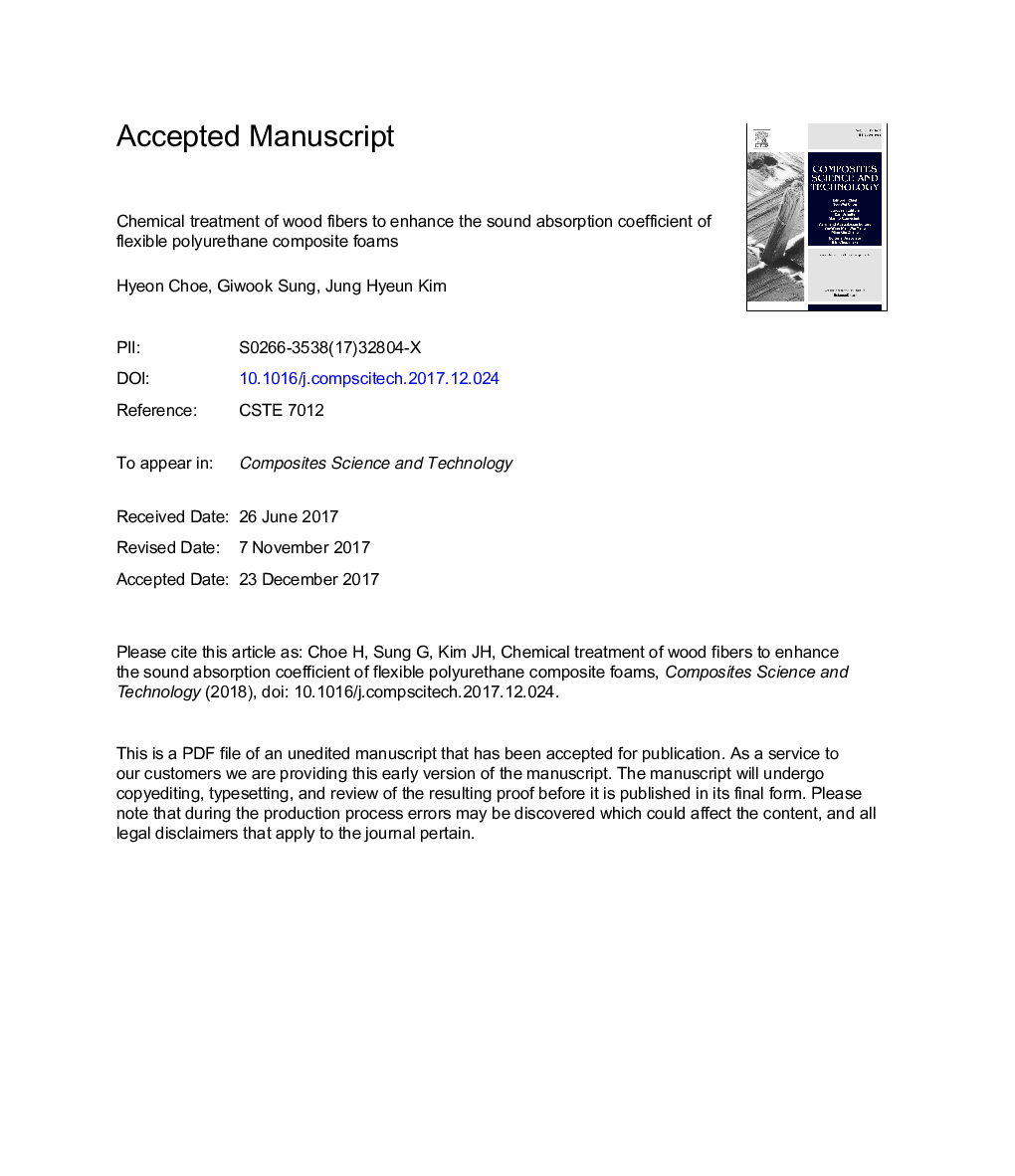| Article ID | Journal | Published Year | Pages | File Type |
|---|---|---|---|---|
| 7214701 | Composites Science and Technology | 2018 | 33 Pages |
Abstract
Polyurethane foams are commonly used as sound absorption materials in the automobile industry because their well-defined structure allows for effective absorption of sound waves through air friction and the structural vibration of cell walls. In this study, chemically treated wood fibers were incorporated into the polyurethane foams to improve their sound absorption coefficient by enhancing the compatibility between the wood fibers and the polyurethane matrix. The open porosity of the composite foams was strongly dependent on the chemical treatments of wood fibers as well as the wood fiber contents in the composites, and it was related to the air-flow resistivity and tortuosity of the foam materials. Model calculations revealed that high air-flow resistivity led to a high sound absorption coefficient, which agreed well with experimental observations. Therefore, for achieving high sound absorption performance in composite foams, no more than the optimum amount of a coupling agent must be used to improve the interfacial compatibility between the wood fibers and the polyurethane matrix. The use of excessive amount of the silane coupling agent led to intramolecular agglomeration, thus negatively affecting the sound absorption behavior.
Related Topics
Physical Sciences and Engineering
Engineering
Engineering (General)
Authors
Hyeon Choe, Giwook Sung, Jung Hyeun Kim,
